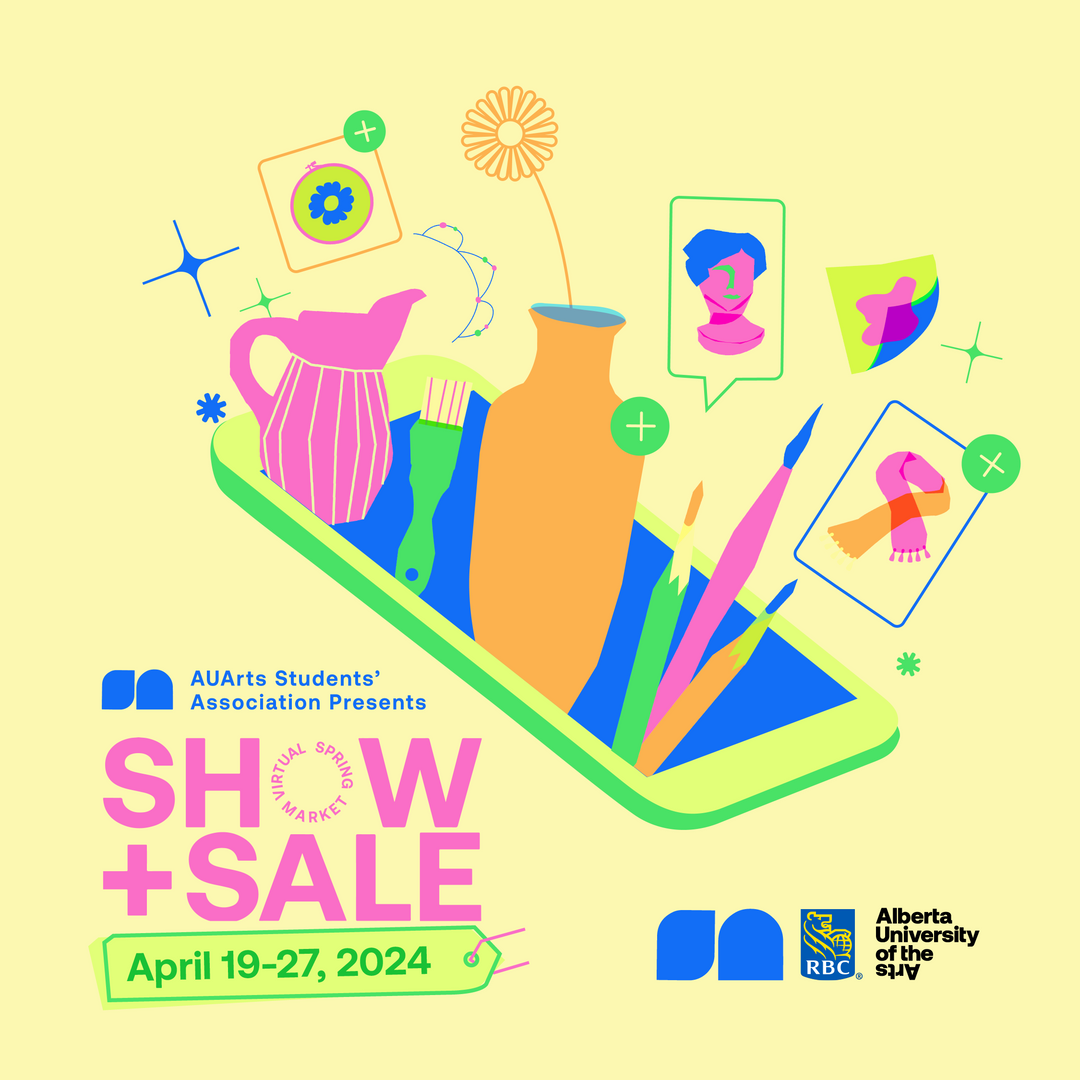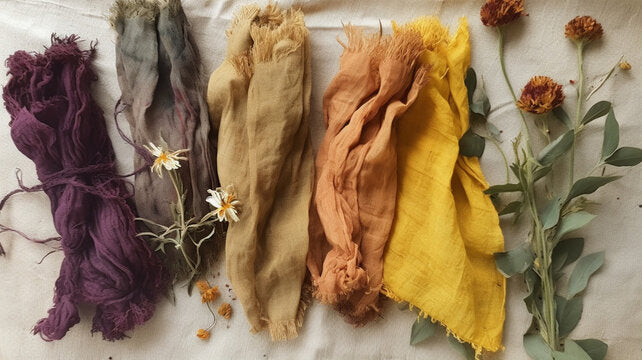Studio Stories: Interdisciplinary Artist Portia Scabar
At AUArts, many students go beyond the confines of their chosen major to become interdisciplinary artists. Being interdisciplinary means that they combine multiple mediums explore their concepts, which results in a unique, holistic art practice. For July we had the pleasure of interviewing BFA alum Portia Scabar (she/her) on the challenges and advantages of being interdisciplinary.

Interview with Portia Scabar
Q: “Tell us a bit about you and your current art practice.”
A: My practice combines glassmaking, fibre, and print processes. I started out being in BFA Glass but realized that I couldn’t choose just one medium to focus on for my work. My artwork is all about creating communities and a sense of belonging for the other, so I see the materials I use as collaborators rather than just mediums that I manipulate. I often use motifs of roots, plants, and flowers to explore how a community can be interconnected and collaborative. As a concept-driven artist, I tend to go with the flow and select my materials after formulating my concept rather than the other way around. I also really enjoy the process of making things with my hands, which is why I guess I gravitate to highly mechanical processes like glassblowing and sewing.
Q: “So what is the definition of 'interdisciplinary'? And what is it like being an interdisciplinary artist?”
A: A lot of people confuse the definition of “interdisciplinary” with “multidisciplinary”. Multidisciplinary artists tend to begin with their materials and then build a concept to match versus interdisciplinary artists, who do the opposite. Both are absolutely valid ways of creating and both require a strong technical understanding of the materials. When I’m making art I like to have a dialogue with my materials; I don’t just control the material, I also listen to it and let its unique properties shine in the final piece. On the plus side being interdisciplinary allows me to expand my boundaries and experimental with my practice but it can also be expensive to buy equipment and supplies for multiple materials. Glassmaking especially can be quite an investment. It is also easy to lose focus when working as a “jack of all trades” so I take meticulous notes in my sketchbook about the techniques I’m using and the ideas I’m thinking about. It definitely takes drive and tenacity to pursue an interdisciplinary practice but overall it has been very rewarding!
Q: “What projects are you working on right now?”
A: I just finished a proposal based studio class which means that I got to choose my own adventure. My most recent body of work was a full room installation inspired by how plants survive and even thrive when they grow in places they were not meant to be. The installation is a safe space where visitors can feel like they are heard and somewhere they can reflect on how they feel in the moment. It’s important for me to create a judgement-free space where people can connect with their community and process their emotions in a healthy way as a way of giving back.
Q: “You’ve mentioned that the cost of an interdisciplinary practice can be a barrier. How do you balance your commercial practice and fine art practice to make ends meet?”
A: I don’t see my commercial practice as separate from my fine art practice; they build off each other and help make being an artist possible. It allows me to have spaces for me to make art as therapy and to make art just for the joy of making it. I’m really inspired by Yoko Ono’s theories about radical happiness; that finding joy in things we love is a way of rebelling against systemic issues. When I’m not working on my fine art pieces I create accessible jewelry and wearables that are environmentally friendly, affordable, and playful. For Show + Sale’s Virtual Spring Market I showcased a selection of flameworked glass earrings and pendants, tote bags, scarves, and cyanotypes. Since I am passionate about being eco-friendly many items will be made from upcycled textile and glass scraps. The money I made from selling my art this spring goes into funding my conceptual practice and covering my living costs so I can continue building my artistic career.
Q: “What are your goals now that you're graduated?"
A: I plan to keep creating! I want to challenge myself by reaching out to galleries and studios in the city where I can present my work and/or build relationships. The goal is a sustainable full-time art practice where I spend summers at international residencies and classes and the rest of the year working in Calgary. I know this isn’t going to happen overnight so I am happy to take things at my own pace outside of school. I know that if I burn out too early from overworking I won’t be able to accomplish what I want in the long term. Once I’m established I would love to teach at an artist run center and give back to my community whenever possible.
Here are a few photos of my latest installation which includes a variety of materials like glass, thread, plaster, and even radishes! Photo credit: Leia Guo.

The connection between people, relationships, and memories expands across our lives, an intertwined system of roots reaching out and embracing. Portia creates abstract representations of these connections through her work by collaborating with materials rather than forcing them into certain shapes. The way that she approaches materials and artwork stems from neurodivergence, from softness and care for others; which in turn leads to a mix of soft sensory-friendly work and glass work that pushes the bounds of what glass is comfortable doing. Many of her works you will see use roots as a motif for connection, at times these will be direct visual representations and others will be more indirect speaking to the wall these connections are often hidden behind. Her functional work is created with the utmost care and of the highest standard. This production line features swirling colours dancing on glass bowls and vases and tote bags made from recycled fabrics, whether for home décor, eating, or everyday use, each piece is unlike the next in its own unique ways. Many of Portia’s works are made from recycled materials, keep an eye out for green imagery on tags to know if the item you are looking at is ecofriendly.
Instagram Account: @soulbloomarts












Leave a comment